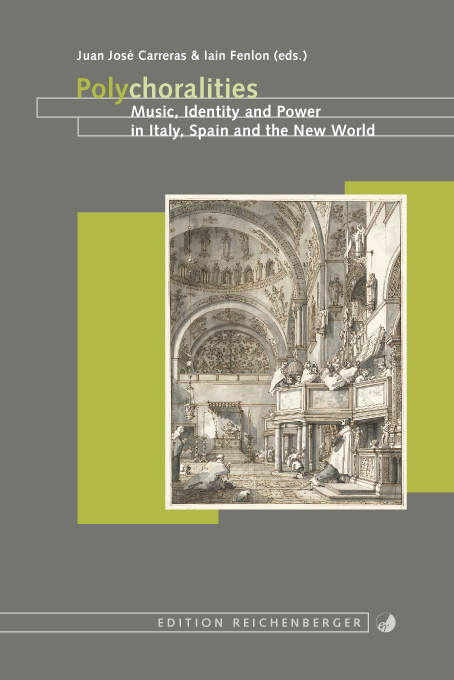|
From its introduction in Venice in the early sixteenth century, polychoral music underwent an extraordinary journey in the course of which it spread throughout Europe, from Lisbon to Warsaw and, crossing the Atlantic, came to be practiced with equal intensity in Latin America. By adopting a broad perspective, the present volume aims to bring together for the first time contributions not only about the origins of the phenomenon itself, but also in relation to its widespread transcultural diffusion in Spain and America.
TABLE OF CONTENTS
Presentazione / Presentation
by Davide Croff, presidente della Fondazione Ugo e Olga Levi
Introduction
by Juan José Carreras and Iain Fenlon
Iain Fenlon
Polychorality: The Origins and Early Diffusion of an International Genre
Noel O’Regan
From Rome to Madrid: the polychoral music of Tomás Luis de Victoria
Francesco Luisi
Policoralità a Roma. Alcuni casi emblematici
Juan José Carreras
La policoralidad como identidad del “Barroco musical español”
Alfonso de Vicente
Los comienzos de la música policoral en el área de la Corona de Castilla. Algunas hipótesis y muchas preguntas
Pablo L. Rodríguez
Il ‘lleno de música’ e la ‘grandeza de Vuestra Majestad’:
Potere, cerimonia e policoralità nella Cappella Reale spagnola nel XVII secolo
Luis Robledo Estaire
Hacer choro con los ángeles. El concepto de policoralidad en la teoría musical española de Cerone a Nassarre
Andrea Bombi
Villancicos policorali nella Corona aragonese
Geoffrey Baker
Polychorality, ethnicity and status in colonial Cuzco, Perú
Ricardo Miranda
Éxtasis de luz y fe: la policoralidad en la Nueva España a través de la obra de Juan Gutiérrez de Padilla
Bibliography
The Authors
Index of names
Patrocinado por la Fondazione Ugo e Olga Levi · Venezia

|


